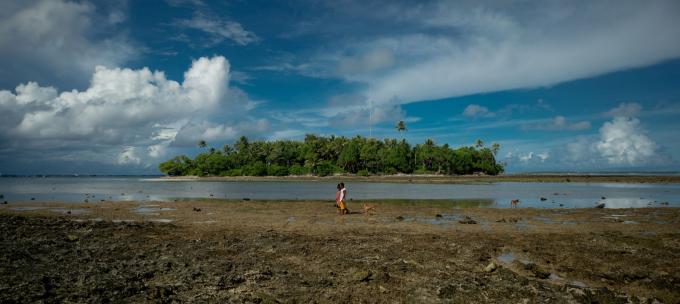

The Marshall Islands coping with the effects of climate change and rising sea levels.
A Logic For the Future
International Relations in the Age of Turbulence
By Stephen Heintz, President & CEO, Rockefeller Brothers Fund
Introduction
History is often told as a story of turbulence, and there have been periods, even in recent memory, of wider and more brutal warfare, genocide, violent revolution, and political repression. But what distinguishes this period in human history is the confluence of forces—political, geo-strategic, economic, social, technological, and environmental, as well as interactions among them—that fuel the turbulence that we see today. Many of the causes and consequences of present-day turmoil are transnational or even global in nature. These conflicts have no regard for borders and are not responsive to solutions devised and implemented by individual nation-states or the existing ecosystem of multilateral institutions.
"We are free to change the world and start something new in it."
Hannah Arendt, 1972
Over millions of years, humankind has proven remarkably resilient, capable of innovating its way through periods of grave existential threat while simultaneously developing cultural, societal, and technological means of improving the human condition. Through vision, creativity, and diligence, humankind can—and must—develop an international framework that can guide us toward a more peaceful, more humane, and more equitable global society, as well as a thriving planetary ecosystem; all by the end of this century.
The challenge of designing a better international system is a difficult one, but choosing to ignore the necessity of reform is a far greater failure than striving and falling short. Moments of profound challenge offer opportunity to convert today’s idealism into tomorrow’s realism. Writing in 1972, German historian and philosopher Hannah Arendt reminded us that we are not consigned to live with things as they are: “We are free to change the world and start something new in it.” This paper is offered in that spirit.
Part I examines the origins and evolution of the logic that underlies today’s system of international relations and offers a revised logic for the future. Part II applies this new logic to the global political landscape and proposes alterations to the institutions and mechanisms of the current international system to better meet the global challenges of this century.
